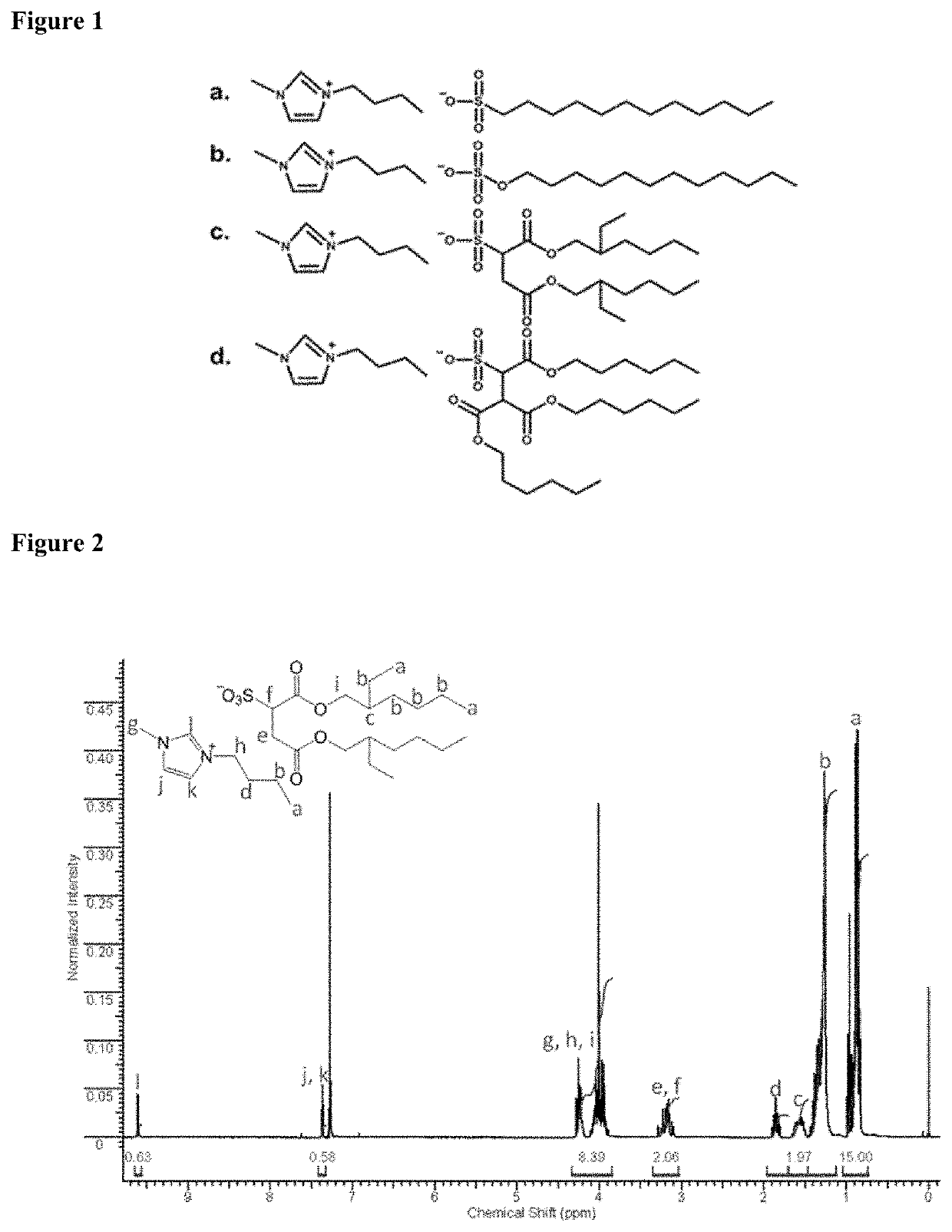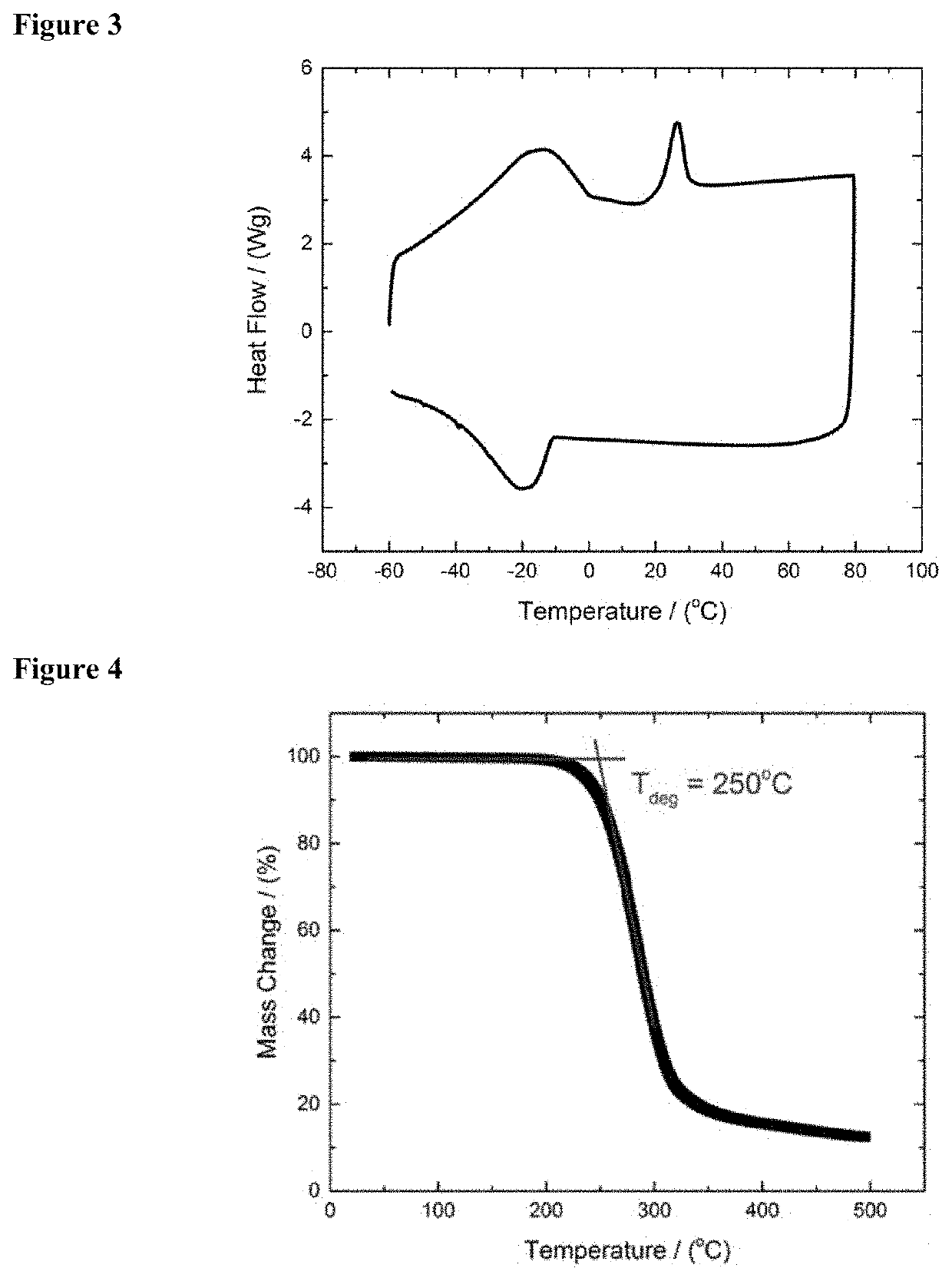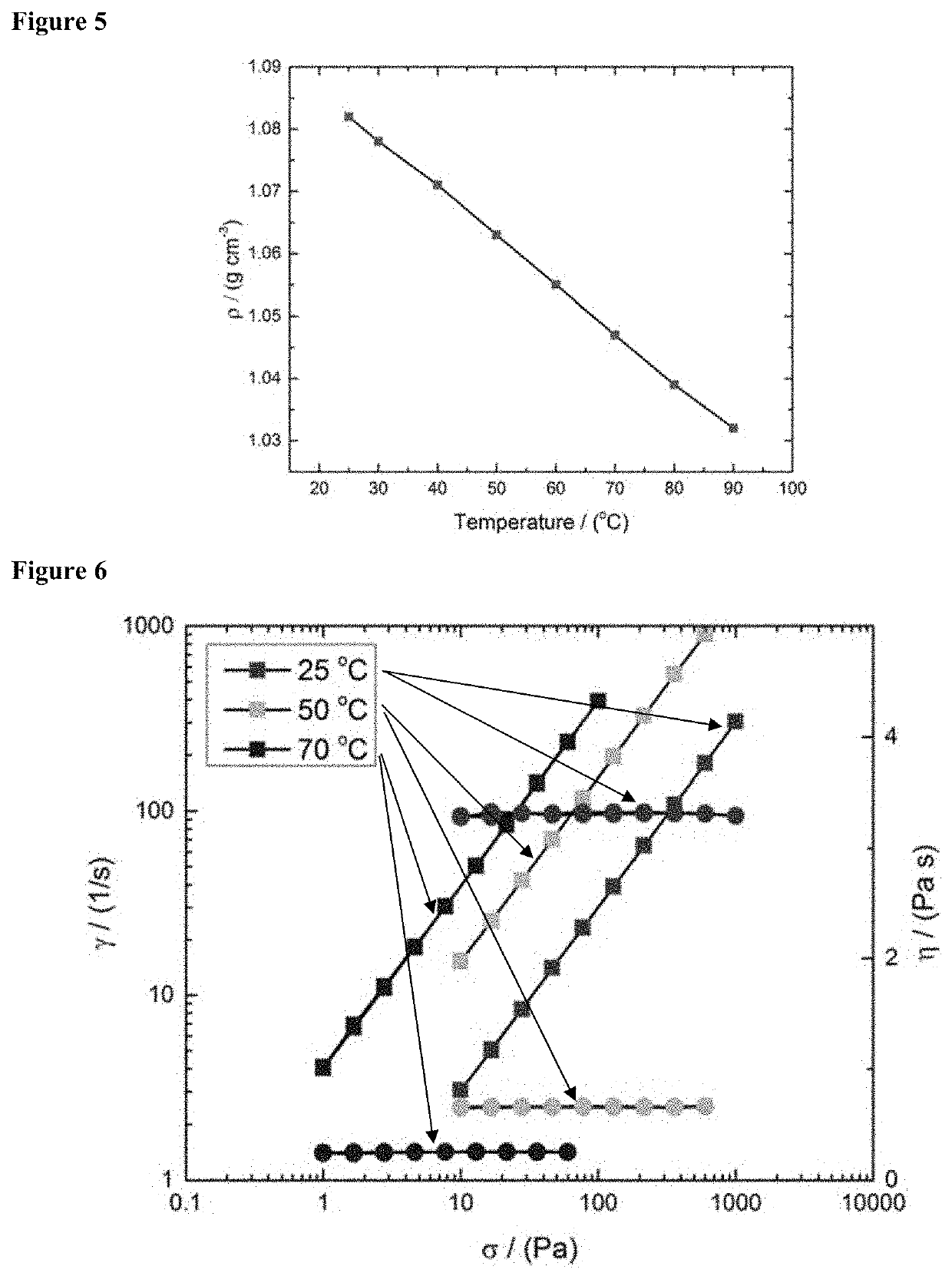High-temperature supercapacitors containing surface active ionic liquids
a supercapacitor and active ionic liquid technology, applied in the direction of electrolytic capacitors, capacitors, transportation and packaging, etc., can solve the problems of unfavorable properties of these devices, and achieve the effects of less toxic, high intrinsic areal capacitance, and high energy density
- Summary
- Abstract
- Description
- Claims
- Application Information
AI Technical Summary
Benefits of technology
Problems solved by technology
Method used
Image
Examples
example 1
of [bmim][AOT]
[0094]1-butyl-3-methylimidazolium 1,4-bis(2-ethylhexoxy)-1,4-dioxobutane-2-sulfonate, [bmim][AOT] (FIG. 1C) was chosen for detailed study. The IL is prepared from cheap commercially available starting materials and is prepared simply via metathesis of Na-AOT with [bmim][Cl]. In brief, 1.0 mol equiv. of 1-butyl-3-methyl-imidazolium chloride and Na-AOT (purified via Soxhlet extraction) was placed in a round-bottom flask and stirred in dry dichloromethane for 6 h; the resulting NaCl precipitate was then filtered off and solvent removed under reduced pressure. The ILs were then dissolved in dry ethyl acetate and centrifuged at 6000 rpm for 1 h. The pure solution was separated from excess salt. It is also possible to prepare the compound using ion exchange columns. The compound was analyzed using 1H NMR (400 MHz): (δ=0.84-0.98) (a, 15H), (δ=1.27-1.45) (b, 18H), (δ=1.51-1.64) (c, 2H), (δ=1.82-1.90) (d, 2H), (δ=3.11-4.27) (e,f,g,h,i, 12H), (δ=7.23-7.24) (j, 1H), (δ=7.31-7.32)...
example 2
emical Properties of [bmim][AOT]
[0096]Before electrochemical analysis could be carried out it was important to establish the physicochemical properties of the new ionic liquids. Firstly cyclic dynamic scanning calorimetry (DSC) profiles were recorded to estimate the melting point of the ionic liquids. The DSC profile of [bmim][AOT] is depicted in FIG. 3. The conventional definition of an ionic liquid is that they have a melting point below 100° C. This is fairly arbitrary and lower melting points around or even below room temperature may be required for application. Cycles were run with ramp rates of 10° C. min−1. The melting point is around −19° C. with a liquid crystalline phase up to around 25° C. This is due to the C2 proton on the imidazole ring.
[0097]The degradation temperature of [bmim][AOT] was estimated using thermogravimetric analysis with a scan rate of 10° C. min−1. Degradation occurred at around 250° C. (FIG. 4).
[0098]Density measurements were conducted from 25-90° C. (...
example 3
emical Studies of [bmim][AOT]
[0103]Once physicochemical properties had been established the capacitance of the ionic liquids was investigated as a function of scan rates. This was achieved using a home built cell. Using a well-established procedure carbon nanotubes were drop cast onto carbon fiber paper, which was attached to a glass slide using copper tape. Two slides were then sandwiched together with ionic liquid in between. Filter paper was not used as some ionic liquids have been known to dissolve cellulose and other materials so it was deemed prudent to avoid this step for now. However, due to high viscosity and good control of intersheet distance this was not a problem. FIG. 11 shows the cyclic voltammetric (CV) curves of [bmim][AOT] and [bmim][BF4] at different temperatures. It can be seen that at higher temperatures (70, 130 and 200° C.), the integrated CV areas for [bmim][AOT] were significantly larger than those for [bmim][BF4]. The energy storage performance (capacitance...
PUM
| Property | Measurement | Unit |
|---|---|---|
| temperature | aaaaa | aaaaa |
| temperature | aaaaa | aaaaa |
| temperature | aaaaa | aaaaa |
Abstract
Description
Claims
Application Information
 Login to View More
Login to View More - R&D
- Intellectual Property
- Life Sciences
- Materials
- Tech Scout
- Unparalleled Data Quality
- Higher Quality Content
- 60% Fewer Hallucinations
Browse by: Latest US Patents, China's latest patents, Technical Efficacy Thesaurus, Application Domain, Technology Topic, Popular Technical Reports.
© 2025 PatSnap. All rights reserved.Legal|Privacy policy|Modern Slavery Act Transparency Statement|Sitemap|About US| Contact US: help@patsnap.com



